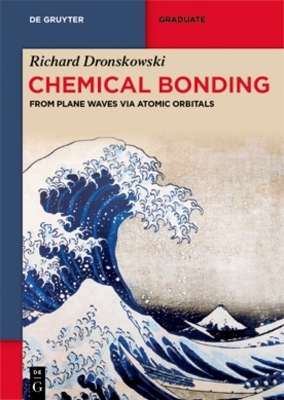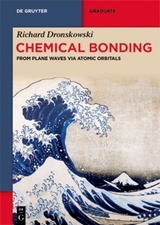Chemical Bonding
Modern DFT simulations of solids and molecules are typically based on the mighty plane-wave pseudopotential combination. Despite being numerically efficient, it does not allow for chemical conclusions unless the electronic structure is unitarily transformed into atomic orbitals. This primer for chemists and as well for physicists and engineers shows how to simply extract the chemistry and, hence, truly understand a plethora of real-world materials
The goal of this humorous primer entertaining to read is to truly serve but not repel the reader. Recent in-person and also virtual summer schools in Europe and Asia have demonstrated the need for such a primer, also to be used for self-training
lt;p>Richard Dronskowski is Distinguished Professor at RWTH Aachen University, Germany, where he holds the Chair of Solid-State and Quantum Chemistry, and he is also Distinguished Research Professor at the Hoffmann Institute of Advanced Materials in Shenzhen, China. He studied chemistry and physics at the University of Münster and finished with two theses on explosive-molecule crystallography and band-structure calculations. He then obtained his doctorate on solid-state chemistry under guidance of Arndt Simon at Stuttgart in 1990. Between 1991 and 1992 he enjoyed being a visiting scientist with Roald Hoffmann at Cornell University and then went back to the Max Planck Institute for Solid State Research at Stuttgart to eventually receive his habilitation with Herbert Jacobs at Dortmund University in 1995; one year later, he accepted the offer to join RWTH Aachen University. His research comprises the quantum chemistry of solids (electronic structure, bonding theory, magnetism, thermochemistry), synthetic solid-state chemistry (carbodiimides, guanidinates, nitrides, metastable phases), as well as chemical crystallography (small molecules) and neutron diffraction (POWTEX diffractometer, multidimensional Rietveld refinement). He has been awarded various scholarships and prizes among which the Otto Hahn Medal (1990), the Prize of Angewandte Chemie (1996), the Chemistry Lecturer Prize (1997), the M. N. Saha Memorial Lecture (2014), the RWTH Innovation Award (2015), and the Egon Wiberg Lecture (2017) stand out. He is the author of Computational Chemistry of Solid State Materials (Wiley, 2005) and the editor of the Handbook of Solid State Chemistry (in 6 volumes, Wiley 2017). He is also the director of the developer team behind the LOBSTER (Local-Orbital Basis Suite Towards Electronic Structure Reconstruction) computer program for chemical-bonding analysis from plane waves used all over the world.
| Erscheinungsdatum | 26.09.2023 |
|---|---|
| Reihe/Serie | De Gruyter Textbook |
| Zusatzinfo | 12 b/w and 77 col. ill. |
| Verlagsort | Berlin/Boston |
| Sprache | englisch |
| Maße | 170 x 240 mm |
| Gewicht | 329 g |
| Themenwelt | Naturwissenschaften ► Chemie ► Anorganische Chemie |
| Naturwissenschaften ► Chemie ► Physikalische Chemie | |
| Schlagworte | atomic orbitals • Atomorbitale • Chemie • Chemistry • computational materials science • Density-Functional Theory • Dichtefunktionaltheorie • Quantenchemie • Quantum Chemistry • Rechnergestütze Materialwissenschaften |
| ISBN-10 | 3-11-116653-8 / 3111166538 |
| ISBN-13 | 978-3-11-116653-7 / 9783111166537 |
| Zustand | Neuware |
| Haben Sie eine Frage zum Produkt? |
aus dem Bereich




